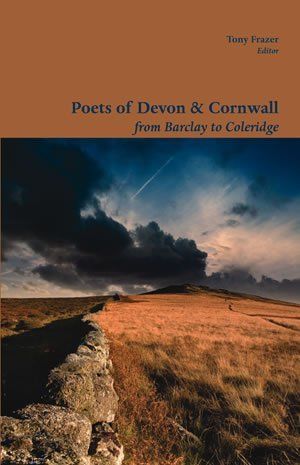Shearsman Poetry Classics
Mary Robinson Selected Poems
Shearsman Classics No. 33. Edited by Robert Sheppard
Published 2024. Paperback, 152pp, 9 x 6ins, £12.95 / $20
ISBN 9781848619180
Mary Robinson (née Darby) was born in 1758 in Bristol, and was a poet, novelist, dramatist, journalist and actress. Tutored by both Garrick and Sheridan, she had a short but dazzling career on the London stage, where she was spotted by the young Prince Regent and became his mistress. The resultant scandal was hot gossip and salacious news, brought to a new reading public by the institution of the daily paper, for which, ironically, Robinson would later write. Although she had always written, her main literary career dates from a serious accident in 1783, which left her permanently disabled. In the 1790s, she produced most of her best work, with an ever-accelerating productivity, in verse and fiction, until her death in 1800 (she wrote 70 poems in that last year). Once associated with fashionable Della Cruscan poetry, in the final years of her life she was in contact with S.T. Coleridge and William Godwin, representatives of vanguards in both politics and literature. After her death, her work suffered from an almost-complete obscurity, aided and abetted by Victorian revulsion at her scandalous past. This position has now changed, and there has been considerable interest in her life, her writing, and the connection between the two in recent years.
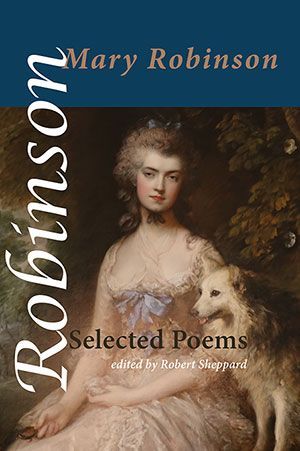
Jorge Manrique Stanzas on the Death of His Father
Shearsman Classics No. 32.
Translated by Patrick McGuinness. Introduced by Geraldine Hazbun. Shearsman Classics series.
Published 2021. Paperback, 102pp, 8.5 x 5.5ins, £10.95 / $18.
ISBN 9781848617728 [Download a sample PDF from this book here .]
Coplas a la muerte de su padre by Jorge Manrique (c.1440–79) is one of the most celebrated poems in the Spanish language. Written shortly before the poet’s death, it is a dignified elegy that speaks not just of a personal loss, that of the poet’s father Rodrigo Manrique (d.1476), but of the evanescence of all things. Its popularity is aided by memorable lines, not least the two opening metaphors: man’s life is a river meandering unto the sea of death, and this world is the road to the next, the lasting dwelling place. The poem replicates these reflections in its wending form. Its forty stanzas each comprise four tercets; each tercet is made up of two longer octosyllabic verses combined with one four-syllable half-line known as
pie quebrado . These regular broken lines, like beats of a heart, invest the poem with a resonant quality befitting the injunction at the opening of the poem to awaken one’s slumbering soul to the passage of time.
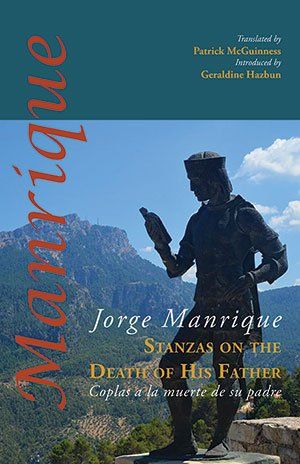
Rubén Darío Selected Poems
Shearsman Classics No. 31. Translated from Spanish by Adam Feinstein. Bilingual edition.
Published 2020. Paperback, 156pp, 9 x 6ins, £14.95 / $23
ISBN 9781848617131 [Download a sample PDF from this book here .]
Rubén Darío (1867–1916), the Nicaraguan poet and founder of the literary movement known as
modernismo – somewhat akin to French
symbolisme – died more than a century ago, but his influence on Spanish-language poetry remains immense. Pablo Neruda, Federico García Lorca, Octavio Paz, César Vallejo, Gabriel García Márquez and Jorge Luis Borges, among many others, acknowledged their debt. Borges declared: ‘Darío was an innovator in everything: subject matter, vocabulary, metre, the peculiar magic of certain words …We can truly call him the Liberator.’
Darío’s influence on Hispanic poetry is enormous: he is the conduit into Spanish for the most forward-looking kind of French poetry of his time, his own major influences including Hugo and Verlaine, and his relentless exploration of new metrical possibilities opened up fresh options for what was an ossified tradition at the time he erupted onto the scene.
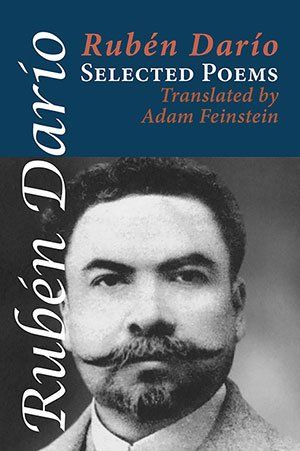
Luís Vaz de Camões Selected Shorter Poems
Shearsman Classics No. 30. Translated from Portuguese by Jonathan Griffin. Bilingual edition.
With an introduction by Jorge de Sena & an essay by Hélder Macedo.
Published 2021. Paperback, 102pp, 8.5 x 5.5ins, £12.95 / $20
ISBN 9781848616769 [Download a sample PDF from this book here .]
This companion volume to
The Lusiads
(see above) brings together all of Jonathan Griffin’s translations of Camões’ shorter poems — mostly sonnets and
redondilhas
.
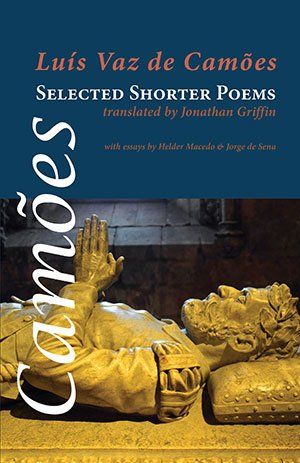
Luís Vaz de Camões The Lusiads
The Lusiads is Camões’ masterpiece and to all intents and purposes his attempt at a Portuguese founding narrative along the lines of the Aeneid, dealing with the rise of Portugal as a maritime power, rather than the rise of Rome. Fittingly, the major presence in these pages is the great navigator, Vasco de Gama. Fanshawe completed his masterly translation while under house arrest at his family estate, during the Cromwellian interregnum, and it is one of the great English literary translations of the 17th century. It holds up particularly well today against more modern versions.
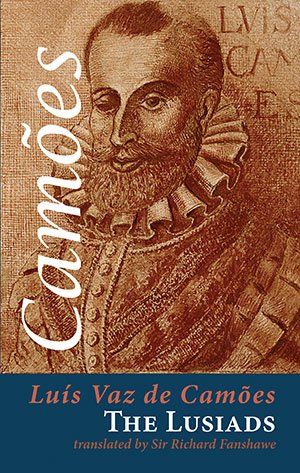
Algernon Charles Swinburne Our Lady of Pain: Poems of Eros and Perversion
Edited & introduced by Mark Scroggins. Shearsman Classics No. 28.
Published 2019. Paperback, 126pp, 8.5 x 5.5ins, £12.95 / $20
ISBN 9781848616455 [Download a sample PDF from this book here .]
Swinburne's first collection, Poems and Ballads (1866), generated a storm of critical and public controversy, being attacked for licentiousness and anti-theism. His publisher withdrew the book within days of publication, and the author was forced to transfer his works to another house. The present selection of Swinburne’s verse focuses precisely on what the first reviewers of the 1866 book found most objectionable: erotic passion, in both its ‘normal’ and ‘perverse’ varieties. The anonymous review for the London Review called the poems ‘depraved and morbid in the last degree’; Robert Buchanan in the Athenaeum pronounced Swinburne ‘unclean for the sake of uncleanness’; and John Morley, in the most thorough and eloquent of the attacks (in the Saturday Review ), called the poems ‘nameless shameless abominations’, Swinburne’s ‘a mind all aflame with the feverish carnality of a schoolboy over the dirtiest passages in Lemprière’, and Swinburne himself ‘the libidinous laureate of a pack of satyrs’. Contemporary readers are less likely to condemn a poet for hinting at or even outrightly depicting sex, but Swinburne’s treatment of physical passion, and the varieties of passion about which he chose to write, retain the power to shock.
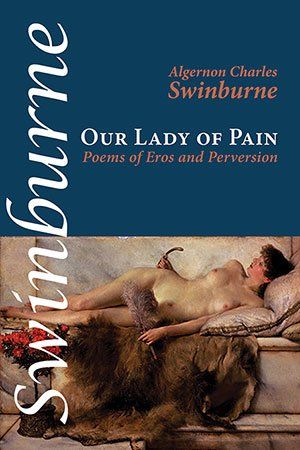
Robert Herrick Hesperides
Shearsman Classics No. 27.
Published 2018. 9x6ins, 436pp, £19.95 / $30.
ISBN 9781848616295. [Download a sample PDF from this book here .]
A reproduction of Herrick's only publication during his lifetime, seen through the press by the author himself in 1648. The book contains more than a thousand poems by one of the great lyric poets of the Caroline era, many of whose poems were set to music by William Lawes and other luminaries of the London musical scene. This edition reproduces the original spelling, in all its quirkiness, and copies the layout, albeit in a larger page-size.
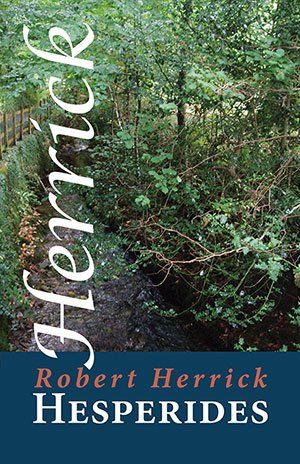
Richard Lovelace Collected Poems
Shearsman Classics No. 26.
Published 2020. 9x6ins, 220pp, £14.95 / $23
ISBN 9781848616172. [Download a sample PDF from this book
here .]
Lovelace joined the Court after his university days and served in the King’s military campaign in Scotland. He was given the position of a “Gentlemen Wayter Extra-ordinary” to the King, and wrote a volume of elegies to the Princess Katherine. For a time he was a general in the royalist army. After the campaign in Scotland failed, he returned to his home in Kent. In 1642 he was imprisoned in Westminster for his political activities, during which time his famous poem ‘To Althea. From Prison’, with its immortal lines, “Stone walls do not a prison make, nor iron bars a cage.” Following his release from prison he joined General Goring to fight in the Low Countries, as his father had done. He remained in Holland and France until 1646, and then returned to London. Upon his return he was imprisoned again. Released in 1649, he then published the volume Lucasta . He died in some poverty in 1658.
A good poet from the group that regarded Ben Jonson as friend and exemplar, his work deserves more attention than it usually receives. As with his friend Suckling (see above), he has tended to be overshadowed by the great names of the era — and there were so many of those.
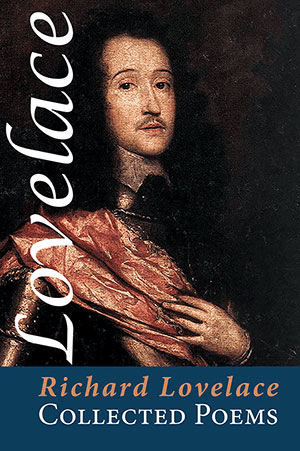
Sir John Suckling Collected Poems
Shearsman Classics No. 25.
Published 2020. 9x6ins, 104pp, £12.95 / $20
ISBN 9781848616127. [Download a sample PDF from this book here .]
Sir John Suckling (1609-1641) was a significant figure in the group of poets who followed Ben Jonson (often referred to as the “tribe of Ben”), and was a close friend of both Robert Herrick and Thomas Carew, as well as Richard Lovelace. These writers tend to be described as Cavalier poets, having been supporters of King Charles I in the English Civil War and, in some cases, having fought actively with the royalist forces.
Suckling was regarded as a “wit” – an educated man about town, able to turn a courteous and amusing phrase, or a poetic tribute, but also a gambler, a womaniser, and a man who dabbled in court politics. This last inclination would lead to him being on the wrong side of history, when his support for the fallen Earl of Strafford led to his own condemnation for treason by Parliament. In order to avoid arrest Suckling fled to France but died not long after his arrival, with most reports suggesting that he died of poisoning.
Suckling’s witty and well-turned verses are typical of his circle and place him on a par with such figures as Lovelace. They are still well worth our attention today some 500 years later.
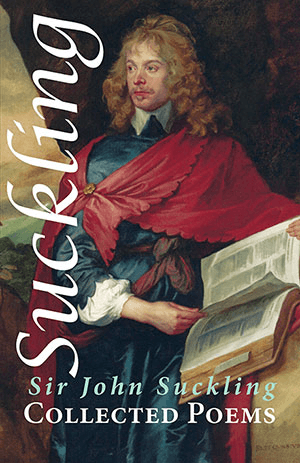
Gérard de Nerval Les Chimères
Shearsman Classics series, No. 24.
Translated from French by Will Stone. Bilingual edition.
Introductions by Anne Beresford & Michael Hamburger, and with notes by Norma Rinsler.
Published April 2017. Paperback, 64pp, 8.5 x 5.5ins, £10.95 / $18
ISBN 9781848614109 [Download a sample PDF from this book here.]
Nerval is one of the most important writers of the French Romantic movement. His great sonnet cycle, Les Chimères , in its marvellous combination of spell, quest and dream, continues to fascinate writers, readers, and translators. Will Stone’s spirited English versions are accompanied by an essay, as well as by an introduction – written in 1949 – by the late Michael Hamburger, as well as commentary by Norma Rinsler, the doyenne of English Nervaliens.
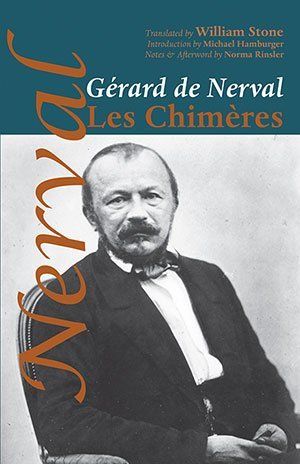
Gerard Manley Hopkins The Wreck of the Deutschland
Shearsman Classics series, No. 23.
Published 2017. Paperback, 88pp, 8.5 x 5.5ins, £10.95 / $18
ISBN 9781848615428 [Download a sample PDF from this book here .]
This volume contains the complete text of the great Hopkins poem, together with Nigel Foxell's introduction and his copious notes, touching on nearly every line in the poem. An indispensable reader's guide to one of the great poems in the language.
‘The Wreck of the Deutschland’‚ deserves and requires close and subtle attention from the imagination and intellect of critics. A new generation of readers will be grateful to Nigel Foxell, poet, novelist and scholar, for the diligence and love he has brought to bear on this formidable task.
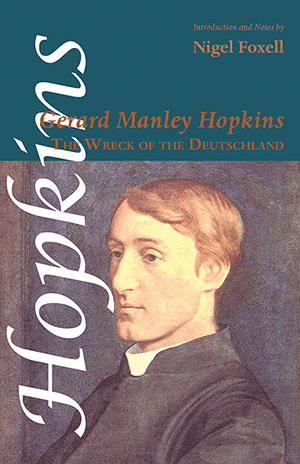
Thomas Carew Collected Poems
Shearsman Classics series, No. 22.
Published 2015. Paperback, 200pp, 8.5x5.5ins, £14.95 / $23
ISBN 9781848614390 [Download a sample PDF from this book here .]
Thomas Carew (1595–1640) was, with Robert Herrick, the finest poet of the “tribe of Ben”, the poets who gathered around Ben Jonson in the taverns of Southwark in the early 17th century. This collected edition is the only complete edition of his poems available.
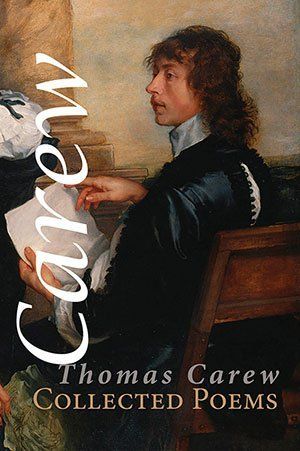
John Donne Poems (1633)
Shearsman Classics series, No. 21.
Published 2015. Paperback, 332pp, 9x6ins, £16.95 / $25
ISBN 9781848613874 [Download a sample PDF from this book here .]
This volume—presented in the original spelling, with all its inconsistencies—reproduces the text of Poems by J.D. With Elegies on the Authors Death , published in 1633, two years after Donne’s death. Very little of Donne’s poetry had been published during his lifetime but it was much prized and many manuscript copies survive from the period, although only one is in the author’s hand. This first edition of Poems by J.D . remains a monument and—unusually for posthumous publications of this kind—very little of the contents was not Donne’s work, only two poems having been incorrectly attributed.
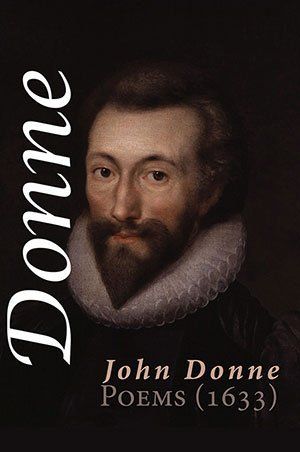
Antonio Machado Solitudes and Other Early Poems
Shearsman Classics series. No. 20.
Translated from Spanish by Michael Smith & Luis Ingelmo.
Published 2015. Paperback, 166pp, 9x6ins, £14.95 / $23
ISBN 9781848613911 [Download a sample PDF from this book here .]
Antonio Machado is, without a doubt, the father of modern Spanish lyric poetry: a bridge that stretches between Bécquer, Rubén Darío and the generation of Jiménez, Lorca, Alberti, Guillén and Aleixandre. An early visit to Paris and an engagement with Symbolism, and its Spanish equivalent, modernism, in the shape of Rubén Darío, was to determine his course as a poet. Machado, however, unlike many of the French symbolists and perhaps because he was Spanish, never turned his back on common reality. Rather, reality and natural images were as sacred to him as mysterious cyphers, flickering shadows at the mouth of the Cave. He was a deeply humanitarian poet; he believed in human emotions and intuitions, and he was always opposed to the baroque in Spanish poetry because he saw it as cerebral or conceptual and therefore an inadequate means of receiving signi-ficance from the temporal flux in which human beings live.
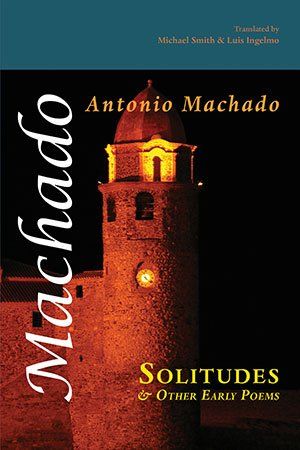
Thomas Gray The English Poems
Shearsman Classics No. 19.
Published 2014. Paperback, 152pp, 8.5x5.5ins, £12.95 / $20
ISBN 9781848613577 [Download a sample PDF from this book here.]
Thomas Gray was the author of some of the most admired poems of the 18th century, the famous 'Elegy' among them, but his reputation continues to rest on a handful of masterpieces, while the rest of his work has faded from view. This book offers all of his poems in English — he wrote also in Latin and Greek — and his translations into English from Italian and Latin, together with a brief introduction and notes.
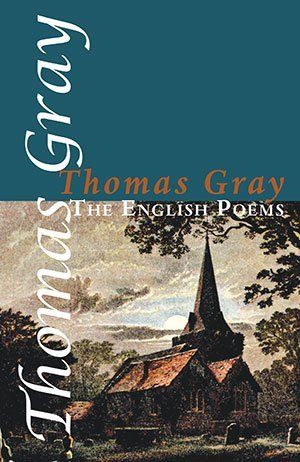
Fernando de Herrera Selected Poems
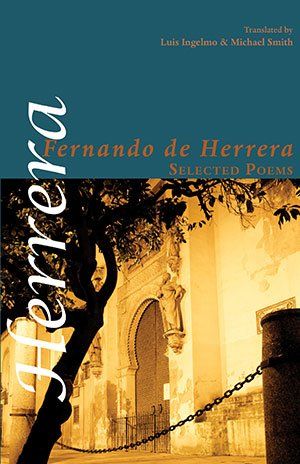
Robert Browning The Ring and the Book
Shearsman Classics No. 17.
Published 2012. Paperback, 620pp, 9x6ins, £24.95 / $37.50
ISBN 9781848612532 [Download a sample PDF from this book here .]
If Sordello is a book-length poem, then The Ring and the Book —in its day regarded as Browning's greatest achievement, but today seemingly out of fashion—is something different. It is in fact a great novel, but one presented in blank verse, almost 21,000 lines of it, and in twelve books, each representing a different view of the action (a court case involving adultery and murder) by one of the protagonists. Why it has been called an "epic poem" is a puzzle; it is epic only in length; it is a poem only because it is in verse. Pushkin's Yevgeny Onegin is everywhere regarded as a novel, although it is in verse. The Ring and the Book is the greatest of all English verse novels; it is one of the great English novels of the 19th century; it is a remarkably modern novel in terms of narrative technique; it is, by any standards a great work of English Literature. It is offered by Shearsman in the author's bicentenary year, as it simply should not be out of print.... if Penguin were doing its job, we wouldn't have to do it.
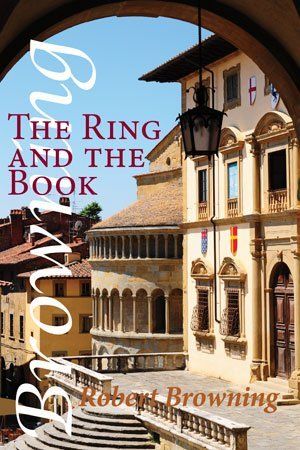
Robert Browning Sordello
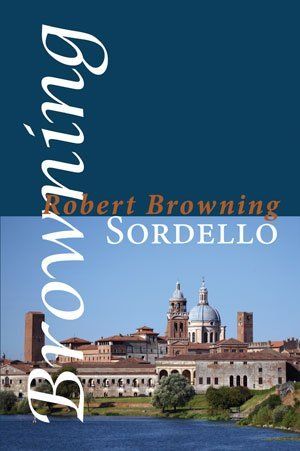
Robert Browning Dramatic Romances
Shearsman Classics No. 15.
Published 2012. Paperback, 164pp, 9x6ins, £14.95 / $23
ISBN 9781848612518 [Download a sample PDF from this book here .]
In Browning's bicentenary year, Shearsman publishes several volumes devoted to his work, starting with a collection of his shorter "long" poems, organised as the poet wished when he put together his complete works. 'The Pied Piper of Hamelin' is here, alongside 'The Last Duchess' and many other favourite poems.
Browning divided many of his poems into groups:
Dramatic Lyrics, Dramatic Romances, Men and Women (the latter also being the title of one of his more successful verse collections).
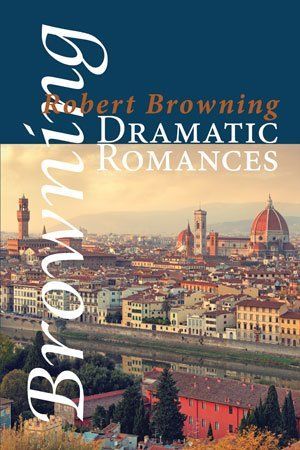
Johann Wolfgang von Goethe Faust — A Tragedy
Shearsman Classics No. 14. Translated from German by Mike Smith. English only.
Published 2012. Paperback, 206pp, 9x6ins, £14.95 / $23
ISBN 9781848612143 [Download a sample PDF from this book here .]
A new translation of one of the greatest monuments of German literature. This is the famous first part ( Faust. Der Tragödie erster Teil ), and does not include the extraordinary (and virtually unstageable) Part 2, completed many years later. First published in 1808, and then in a revised edition in 1829, the story — a variant of the old Faustus legend—concerns the scientist (or perhaps, better, natural philosopher), Dr Heinrich Faust, whose scientific quests, and their lack of success, lead him into a state of great frustration. Parallel to this, Mephistopheles (the Devil) lays a wager with God that he can subvert God's favoured human (for this is Faust).… (read more on the shop page)
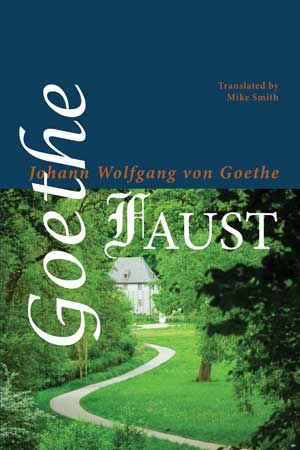
D.H. Lawrence Studies in Classic American Literature
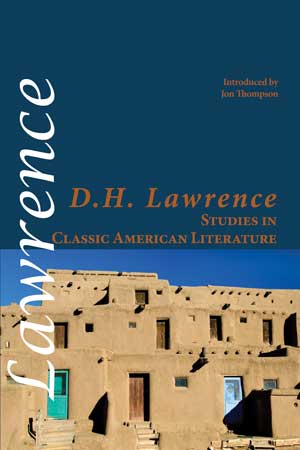
D.H. Lawrence Birds, Beasts and Flowers
Shearsman Classics No. 12. Introduced by Jeremy Hooker
Published 2011. Paperback, 180pp, 9x6ins, £14.95 / $23
ISBN 9781848611573 [Download a sample PDF from this book here .]
Birds, Beasts and Flowers (1923) was the volume that Lawrence himself described as his best collection of poetry. Composed in various locations during his exile—in Italy, France, Germany and the United States—this long collection occupies a crucial place in the development of his poetry and is that rarest of creations: a masterpiece of modernist nature writing. This version offers the full text of the first British edition (which included the poems from Tortoises , excluded from the US edition). The prose prefaces, composed for a later re-issue are also included.
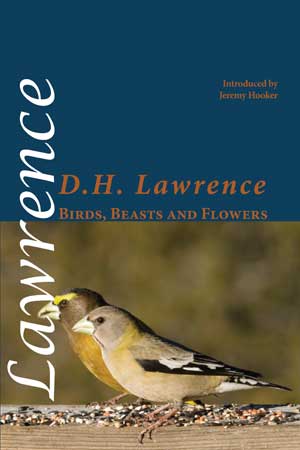
D.H. Lawrence Look! We Have Come Through!
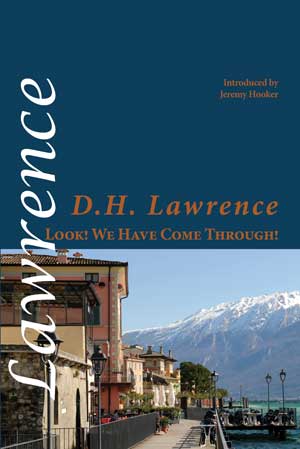
Mary Coleridge Selected Poems
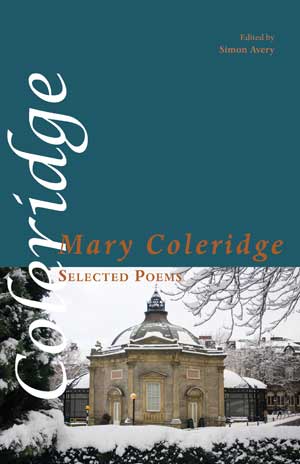
Anon (ed.) Englands Helicon (1600)
Shearsman Classics No. 9. (The Tudor Miscellanies Vol. 3)
Published 2010. Paperback, 228pp, 9x6ins, £14.95 / $23
ISBN 9781848611054 [Download a sample PDF from this book here .]
Following the publication in 1557 of Tottel's Miscellany , a number of other anthologies or miscellanies appeared. Englands Helicon differs from its predecessors in representing a particular style of writing—the newly fashionable pastoral style, with its origins in the classics, and above all Virgil, but actually adopted from Spanish, French and Italian models. Indeed, the largest selection of any one author in this book is of Bartholomew Yong, and his translations of Montemayor's Diana —a pastoral in verse and prose which was popular throughout Europe. It was not that these poets were actually much enamoured of nature or of the countryside: the pastoral style was like a suit of clothes that could be donned in order to express certain subjects—above all, love—without getting into hot water.
Anon (ed.) The Phoenix Nest (1593)
Shearsman Classics No. 8. (The Tudor Miscellanies Vol. 2)
Published 2010. Paperback, 116pp, 9x6ins, £12.95 / $20
ISBN 9781848611047 [Download a sample from this book here .]
Following the publication of Tottel's Miscellany in 1557, a number of other such miscellanies appeared, none of them especially significant from an artistic point of view. In 1593, however, a still-unidentified gentleman known only by his initials (R.S.) published this relatively slim, well-printed and well-designed compilation, which included works by a number of significant poets of the day—those identified are Sir Walter Raleigh, Thomas Lodge, Nicholas Breton, Robert Greene, George Peele, the Earl of Oxford, Sir Edward Dyer, and Thomas Watson. It is almost certain that the Phoenix of the title was Sir Philip Sidney (1554–1586), to whom the first three elegies in the book are dedicated.
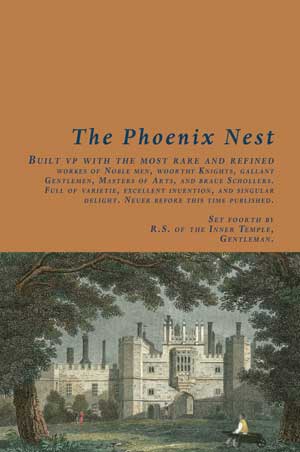
Anon (ed.) Tottel's Miscellany (1557)
Shearsman Classics No. 7. (The Tudor Miscellanies Vol. 1)
Published 2010. Paperback, 300pp, 9x6ins, £16.95 / $25
ISBN 9781848611030 [Download a sample from this book here .]
1557 saw the publication of this ground-breaking volume: the first printed anthology of contemporary poetry in English. The book is built on a foundation of two recently-deceased aristocratic poets, Sir Thomas Wyatt and Henry Howard, Earl of Surrey, who had by their example given English poetry a new direction, above all with the introduction of the Petrarchan sonnet, but also with the invention of blank verse. The anthology was to have an enormous impact, giving witness to the latest developments in English verse for a far bigger public than would have been the norm in the mid-16th century, when manuscripts tended to circulate anonymously and in a small circle of gentlemen.
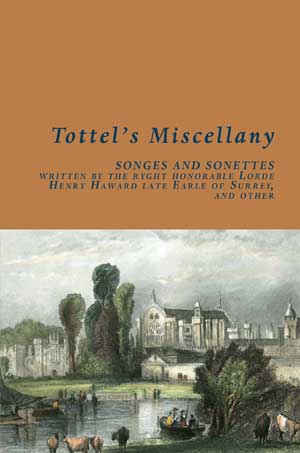
Sir Thomas Wyatt Selected Poems
Shearsman Classics No. 6. Edited by Michael Smith.
Published 2010. Paperback, 110pp, 8.5x5.5ins, £12.95 / $20
ISBN 9781848611023 [Download a PDF sampler from this book here .]
Sir Thomas Wyatt (1503–1542) was born at Allington Castle in Kent. He studied at St John's College, Cambridge, and served King Henry VIII in various capacities both at home and abroad. He was knighted in 1535, but was imprisoned in the Tower a year later following a quarrel with the Duke of Suffolk, but also perhaps because of suspicion that he had been the lover of Anne Boleyn — a woman he had known for many years and with whom he had been linked at one time. He was released the same year, although he was to fall afoul of authority on at least two further occasions, only to be pardoned. He is remembered today as one of the most important poets in the English language, and as the man who brought the sonnet into English, with spectacular imitations and re-creations of Petrarch. His work is broader than that, however, and he showed himself to be a fine elegist and satirist, as well as a lyric poet of the very first order.
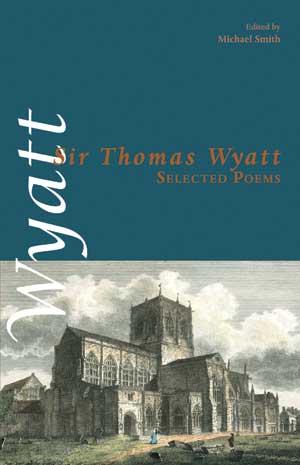
William Strode Selected Poems
Shearsman Classics No. 5. Edited by Tony Frazer.
Published 2009. Paperback, 100pp, 8.5x5.5ins, £10.95 / $18
ISBN 9781848610057 [Download a PDF sampler from this book here .]
William Strode, born in Plympton, Devon, in the early years of the 17th century, is a little-known writer of the Jacobean and Caroline eras, but he was a fine lyric poet and little deserves his oblivion. Hitherto the only publication of his work was by Bertram Dobell in 1907, since which time he has often been anthologised but never again granted a volume of his own. This volume redresses the balance.
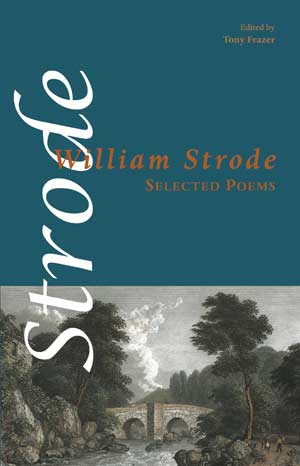
Mary, Lady Chudleigh Selected Poems
Shearsman Classics No. 4. Edited by Julie Sampson.
Published 2009. Paperback, 148pp, 8.5x5.5ins, £12.95 / $20
ISBN 9781848610484 [Download a sample from this book here .]
Mary, Lady Chudleigh (1656–1710) was a confidante of John Dryden and a leading figure amongst the women writers of her day. In many ways a proto-feminist, Lady Chudleigh was still a provincial aristocrat and devout Protestant, and her work shows many of the apparent contradictions of the early modern era. This is the only selection of her work available in paperback, and her work deserves to be known for more than a few anthology standards.
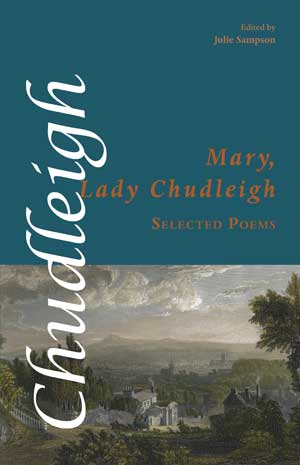
Tony Frazer (ed) Spanish Poetry of the Golden Age, in contemporary English translations
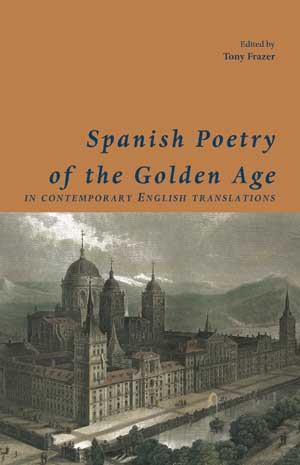
Robert Herrick Selected Poems
Shearsman Classics No. 2. Edited by Tony Frazer.
Published 2007. 8.5x5.5ins, 120pp, £12.95 / $20
ISBN 9781905700493. [Download a sample PDF from this book here .]
Robert Herrick (1591–1674) was perhaps the greatest poet to have worked in Devon. Born in London, the son of a goldsmith, he studied at Cambridge and later fell in with the London poets who had gathered around the magnetic figure of Ben Jonson. In order to make a living—since he had not pursued the family trade—he entered the Church and in 1627 was appointed chaplain to the Duke of Buckingham, whom he accompanied on an unsuccessful military expedition in 1627. In 1629 he was appointed to the living of Dean Prior, a village on the edge of Dartmoor, about half way between Exeter and Plymouth. He was to remain there for the rest of his life, with the exception of the Cromwellian period from 1647–1660, during which he was expelled for his royalist sympathies and, no doubt, also doctrinal disagreements.
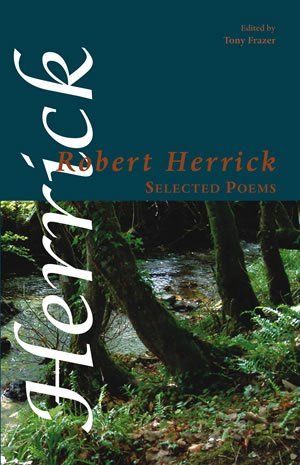
Tony Frazer (ed.) Poets of Devon & Cornwall, from Barclay to Coleridge
Shearsman Classics No. 1.
Published 2007, 8.5x5.5ins, 148pp, £12.95 / $20
ISBN 9781905700509 [Download a sample PDF from this book here .]
Alexander Barclay, George Peele, John Ford, Humfrey Gifford, Richard Carew, Anne Dowriche, Sir Walter Ralegh, Sir Arthur Gorges, Joseph Hall, Robert Herrick, Sidney Godolphin, William Strode, William Browne, Thomas Spratt, Mary, Lady Chudleigh, Thomas D'Urfey, John Gay, Samuel Taylor Coleridge.
All of these are poets born in the two westernmost counties of England, or—like Hall and Herrick—poets who were active there. In time we stretch from the very beginning of the 16th century until the early 19th century. We begin with Barclay, a priest working in Ottery St. Mary, and we close with Coleridge, the son of a priest in Ottery St. Mary, his birthplace.
